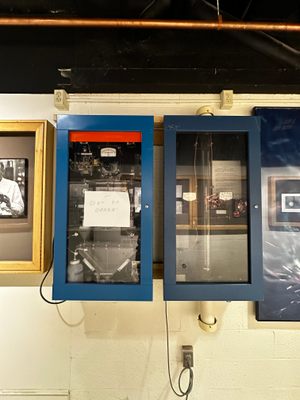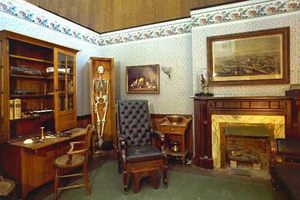About
Harold Edgerton possessed a long and impressive list of accomplishments and triumphs in the worlds of science and the arts and may be best recognized in popular culture for his striking Life Magazine photos during the 30s and 40s. In a lifelong collaboration with photographer Gjon Mills, the two used stroboscopic equipment to capture images of events that happened too quickly for the human eye to register. Pioneering strobe photography, they captured revolutionary images of balloons bursting, birds in flight, and the impact of a bullet on an apple, just to name a few.
His relationship with MIT was long and prosperous. Earning a Master of Science in electrical engineering in 1927, he went on to receive his Doctor of Science in 1931 using stroboscopes to study synchronous motors for his thesis.
In 1948, Edgerton was appointed full professor in electrical engineering at MIT, and was a much loved and well respected educator there for 30 years. His students adored him for his kind patience and willingness to teach, describing him as a brilliant man who loved to teach hands-on, quoting him as saying, “The trick to education is to teach people in such a way that they don't realize they're learning until it's too late”.
Established in 1992, the MIT Edgerton Center continues the hands-on legacy of Harold “Doc” Edgerton by giving students opportunities to learn by doing. The Center’s hands-on learning programs include subjects in engineering and imaging for students and professionals, the international-development program D-Lab, student-run clubs and teams, student machine shops, and a year-round K–12 science and engineering outreach program, including professional-development workshops for teachers.
As Laura Nicholson '09 said on the MIT Admissions blog "It's sort of like the hidden engine behind the "manus" part of "mens et manus" (MIT's official motto, which means "mind and hand.")
Related Tags
Community Contributors
Added By
Published
March 27, 2012


































































